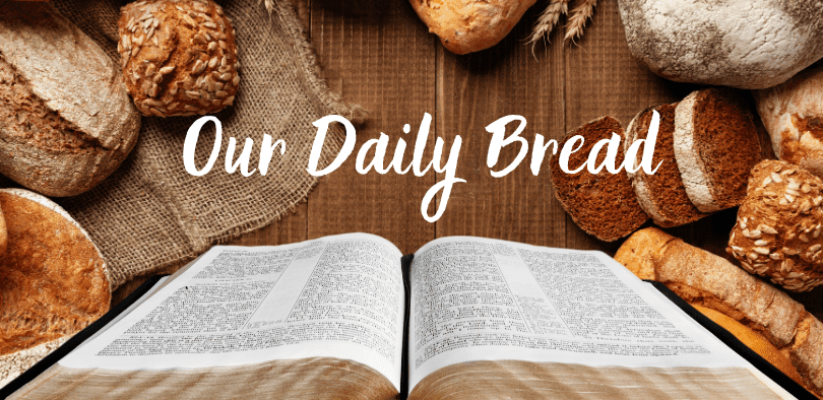For the Gospel passage for this coming Sunday, the lectionary takes us back to the earliest and shortest Gospel—that attributed to Mark. We left the continuous reading of Mark at the end of Epiphany, by which stage we had read most of chapter 1. This week, we pick up that continuous reading with two stories (2:23—3:6). It will stretch out until the feast of The Reign of Christ in late November.
This passage focusses on a group of people who form a central “character” in Mark’s Gospel: the group of Pharisees who regularly appear in conflict with Jesus. There is tension between Jesus and the Pharisees in many passages of Mark’s Gospel.
The German scholar Martin Kähler once described this Gospel as a “passion narrative with an extended introduction” (The So-called Historical Jesus and the Historic, Biblical Christ, 80 n. 11). The passage offered by the lectionary for Sunday contains a crucial clue in this regard.
Although the story that Mark tells has started with hope—fishermen following Jesus, healings taking place, even a tax collector joining the group—there are ominous clouds on the horizon. Questions are raised about the practices of Jesus (2:24). Even though Jesus justifies his actions by quoting scripture (2:25–26), and even though he does a good deed by healing a disabled man (3:5), his questioners appear dissatisfied. A plot is formed, with murderous intention (3:6); the author signals that the life of Jesus is in danger.
These unlikely conspirators—Pharisees, nationalist Jewish teachers, and Herodians, collaborators with the Roman overlords—come together again towards the end of the story (12:13), when the plot to kill Jesus has been reactivated (11:18) and would soon come to fruition (14:1, 10–11). So these ominous clouds hang over the whole story of Jesus and his disciples in Galilee; the first eleven chapters do indeed appear to be “an extended introduction” to the main story: how to destroy Jesus (3:6).
We need to take care as to how we interpret this simmering conflict between Jesus and the Pharisees. The earlier part of the passage for this Sunday provides an important clue, as we shall explore. Most importantly, we should avoid any antisemitic overtones in the way that we deal with this tension.

Christianity has inherited a tradition of regarding the Pharisees as ‘legalistic’ or ‘hard-hearted’ (and many other stereotyped names in common use in the church). This tradition does not take into account the context of the gospels’ writing, and the tense relationship that existed between the early Christians and the various Jewish factions from which many of their numbers came.
Originally, these early groups considered themselves as part of Judaism, which was a many-faceted faith. The early Christians on the whole did not split from Judaism until quite some time after Jesus’ death. Many problems faced the early Christian communities, who were often persecuted by both gentile and Jewish authorities.
Most of the evidence we have from New Testament times outside of the bible does suggest that the Pharisees on the whole did live as they taught, and that they were holy, compassionate and righteous men. Josephus, a first century Jewish writer in the Roman court, describes the Pharisees as “affectionate to each other” and people who “cultivate harmonious relations with the community.” (Josephus, War ii. II9f., 122, 137–42, 152f., 162–6).
It was not uncommon for the laws to be interpreted in various ways. The Pharisees here had one interpretation, Jesus had another. This was normal Jewish behaviour.
The synoptic gospels claim for Jesus the same scripture and the same traditions as the Pharisees. However, these scriptures and traditions are at times interpreted differently by Jesus. The Law must still be obeyed, but how it is to be obeyed was debated. This is crucial to understanding the historical relationship between Jesus and the Pharisees, and to appreciating how Mark portrays that relationship for a particular theological purpose.
Jesus taught in the synagogues. He acknowledged the authority of the Pharisees but challenged their practices: ‘The scribes and Pharisees sit on Moses’ seat; therefore, do whatever they teach you and follow it; but do not do as they do, for they do not practice what they teach’ (Matt 23:2-3). Jesus does not question their authority; but their teachings, their interpretations, are to be questioned.
In Mark’s Gospel, the Pharisees and Jesus engage in a series of debates about various aspects of Jewish law. Early in Mark’s Gospel, questions are asked of Jesus regarding his authority to teach and do what he was doing (Mark 2:3–12; 2:16–17; 2:18–20). In Mark 2:23–28, the Pharisees accuse Jesus’ disciples of violating the Sabbath.
The laws of the Hebrew Bible made it clear that the plucking of grain to assuage hunger was permitted (Deut 23:25). The issue at stake here is that the disciples plucked the grain on the Sabbath, which was technically harvesting (ie plucking the grain and rubbing it in their hands). The specific law they are breaking can be found in Exodus 34:21. Exodus 20:8–11 (paralleled in Deuteronomy 5:14) is of course the “foundational law”.
However, while a hungry wayfarer could pluck grain to eat in a field, this law did not apply on the Sabbath day. The law that is under discussion here is explicitly Exodus 34:21, which forbids any action considered ‘harvesting’ on the Sabbath day. It was not unlawful to eat the grain; just to harvest it. Jews were expected to make such preparations for eating before the Sabbath commenced, which was sundown on Friday, as Exodus 16:23–26 spells out.
These laws are all found in the Torah, or Pentateuch, which constitutes the first five books of the bible. These books were not written by the scribes and Pharisees; rather, they studied these books, and recorded their interpretations (or understandings) in the Mishnah and the Talmud. The laws that the Pharisees followed are therefore found in both the Jewish and the Christian canon of scripture. Jesus only spoke directly about a small percentage of the total laws, yet made it clear that he respected the Law as a whole.
There is no evidence in the gospels to suggest that Jesus encouraged the disciples to break the law. On the contrary, the Jesus of the gospels is a basically a law-abiding Jew, if a somewhat radical one at times. He speaks of following the law in all three synoptic gospels (see Matthew 5:17–19; 25: 31ff; Mark 10:17–23; Luke 18:18–25).
Nowhere in the gospels does Jesus — or anyone else — remark that the law has become an intolerable burden. The religion of Jesus was Judaism. He was born into this religion, was circumcised and obeyed the Law for most of his life. Jesus’ teaching does not oppose Jewish scripture or Jewish teaching. Certainly his interpretation of these could be quite radical at times, and there is no doubt he set out to reform some of the more rigid aspects of Judaism.
Jesus debates the Pharisees using time-honoured debating techniques of pesher and midrash, used often in Rabbinic debate. This is an important component of Jesus’ debate with the Pharisees, and suggests that Jesus had been educated by the Pharisees. It is vital to note that Jesus does not criticise the law as such, but rather the Pharisees’ interpretation of it. He offers a different, better interpretation.
In using and expanding the story of David from the Hebrew Bible Jesus demonstrates his grasp of midrash technique. The point that Jesus is making from this story is that certain circumstances should override the strict letter of the Law. David ate what was not lawful because of his great hunger – the circumstances justified the action. By interpreting this story to apply to the situation of the disciples, Jesus shows his grasp of pesher (interpretation).
We are meant to deduce that the disciples were hungry and in need of food, which took precedence over the demands of the Sabbath. This is why Jesus uses the story he does of King David — it is David’s hunger that justified his breaking of the law.
Even amongst themselves, the Pharisees rarely agreed on the interpretation of any Law — many interpretations exist in the Jewish writings (Mishnah and Talmud) for each Law. In particular the Rabbinic schools of Hillel and Shammai were famous for their disagreements – they rarely interpreted any of the laws the same way.
One other common Christian misconception is that Jesus’ interpretations of the law are always new and very different from any Jewish interpretation. This is simply not the case. In our sample passage, Jesus actually isn’t putting forward a revolutionary principle– a number of rabbis, using Hebrew bible parallels (cf. Exodus 23:12; Deuteronomy 5:14) also stressed that the sabbath was for people as well as for their refreshment after labouring, in a saying found in the Rabbinic writings (Mekilta on Exod, 31:14; b. Yoma 85b) that states “The sabbath is handed over to you, not you to it”.
*****
This blog draws on material in MARKING THE GOSPEL: an exploration of the Gospel for Year B, by Elizabeth Raine and John Squires (self-published 2014). Thanks to Elizabeth for sharpening the analysis of Mark 2 as we wrote this book.





